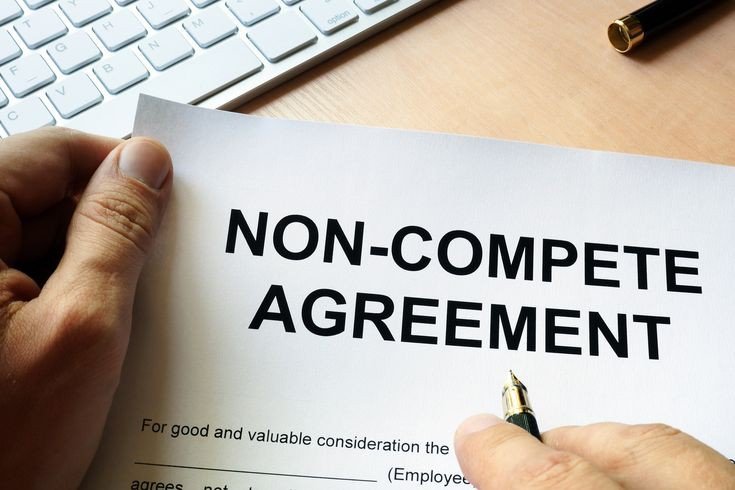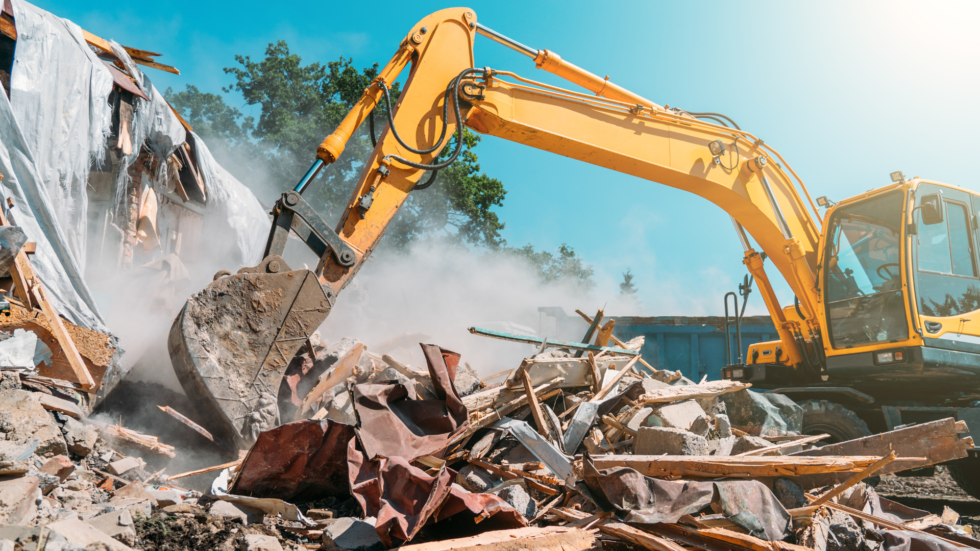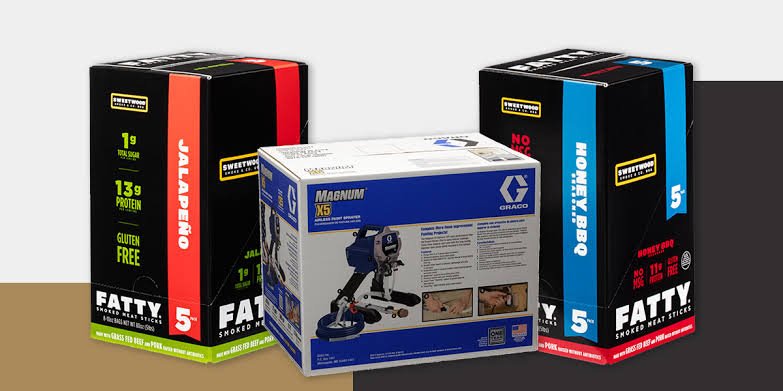Business
All You Should Know About Non Compete Agreements

Non-compete agreements are a significant aspect of employment law, influencing the relationship between employers and employees in various industries. These agreements can have a profound impact on an employee’s career and mobility. Understanding non-compete agreements is essential for both employers and employees to navigate their rights and obligations effectively.
Non-compete agreements are especially pertinent in states like Florida, where specific regulations govern their enforceability and scope, adding a layer of complexity to the legal landscape surrounding employment contracts. In particular, the enforcement and interpretation of non-compete agreements in Florida can significantly impact the rights and responsibilities of both employers and employees.
What Is a Non-Compete Agreement?
A non-compete agreement (NCA) is a legal contract between an employer and an employee, where the employee agrees not to enter into competition with the employer during or after employment. This agreement restricts the employee from engaging in activities that are in direct competition with the employer’s business, typically within a specified geographic area and for a certain period after the employment ends.
Non-compete agreements aim to protect the employer’s legitimate business interests, including trade secrets, customer relationships, and confidential information. By signing an NCA, the employee acknowledges these interests and agrees to avoid actions that could harm the employer’s business.
Components of a Non-Compete Agreement
Here are several key components commonly found in non-compete agreements:
- Duration:
It specifies the length of time the non-compete clause will be in effect after the employee leaves the company. This period can range from a few months to several years, depending on the industry and specific circumstances.
- Geographic Scope:
It defines the geographic area in which the employee is restricted from competing. This can be as broad as a country or as narrow as a specific city or region.
- Scope of Activities:
It outlines the types of activities that are restricted under the agreement. This typically includes working for direct competitors, starting a competing business, or soliciting the employer’s clients or customers.
- Consideration:
It describes the remuneration or advantage that the employee obtains in return for accepting the non-compete conditions. This could be a job offer, a promotion, or additional benefits.
- Confidentiality and Non-Disclosure Clauses:
It often included protecting the employer’s proprietary information and ensuring that the employee does not disclose sensitive information to competitors.
- Enforceability:
The agreement must comply with state laws, as enforceability can vary significantly across different jurisdictions. Courts often consider factors like reasonableness and necessity when determining if a non-compete agreement is enforceable.
When and Why Are Non-Compete Agreements Used?
Non-compete agreements are used in various situations to safeguard an employer’s interests:
- Protection of Trade Secrets:
Employers rely on non-compete agreements to safeguard their proprietary information, such as formulas, processes, or strategies. By restricting employees from disclosing or using this sensitive information for competitive purposes, companies maintain their competitive edge in the market.
- Retention of Client Relationships:
Non-compete agreements help businesses retain their client base by preventing employees from soliciting or taking clients with them if they join a competitor. This ensures continuity in customer relationships and protects the company’s revenue streams.
- Investment in Employee Training:
Companies often invest significant resources in training their employees to acquire specialized skills and knowledge. Non-compete agreements ensure that this investment is not wasted if an employee leaves the company and immediately utilizes their training at a competing organization.
- Preventing Unfair Competition:
Non-compete agreements play a crucial role in preventing former employees from using insider knowledge to gain an unfair advantage in the market. By restricting their ability to compete directly or solicit clients, these agreements maintain a level playing field and uphold ethical business practices.
Industries That Use Non-Compete Agreements
Non-compete agreements are prevalent in several industries, particularly those where intellectual property, client relationships, and specialized training are critical:
- Technology and IT:
Companies in this sector use non-compete agreements to protect software code, development processes, and innovative technologies that are crucial to their success.
- Healthcare:
Medical practices and healthcare providers use non-compete agreements to protect patient lists and proprietary medical techniques.
- Sales and Marketing:
Sales professionals often have access to client lists and sales strategies, making non-compete agreements common to protect these valuable assets.
- Finance and Banking:
Non-compete agreements in this industry help protect financial strategies, client relationships, and proprietary investment methods.
- Media and Entertainment:
Talent and executives in this industry may be subject to non-compete agreements to prevent them from taking their expertise and audience to competing networks or companies.
- Manufacturing:
Protecting manufacturing processes, supplier relationships, and proprietary products are common reasons for non-compete agreements in this industry.
Conclusion
Non-compete agreements are powerful tools for employers to protect their business interests, but they must be carefully crafted and reasonably applied to be enforceable. Understanding the components, purposes, and industry-specific applications of non-compete agreements can help both employers and employees navigate their rights and responsibilities.
For employers, it is crucial to ensure that non-compete agreements are clear, reasonable, and comply with state laws to avoid potential legal challenges. Employees should thoroughly review non-compete clauses before signing and seek legal advice from BT Law Group if necessary to understand the implications fully.
As the business landscape evolves, so too do the laws and perceptions surrounding non-compete agreements. Staying informed about these changes is essential for maintaining fair and effective employment practices. Whether you are an employer looking to protect your business or an employee concerned about your future opportunities, understanding non-compete agreements is a vital part of navigating today’s job market.
Business
Everything You Need to Reduce Waste in Your Demolition Business
In the world of construction and demolition, waste reduction isn’t just a buzzword—it’s a necessity. Not only does effective waste management help in complying with environmental regulations, but it also enhances your business’s efficiency and profitability. Here’s a comprehensive guide on how to minimize waste in your demolition business, from planning to execution.

In the world of construction and demolition, waste reduction isn’t just a buzzword—it’s a necessity. Not only does effective waste management help in complying with environmental regulations, but it also enhances your business’s efficiency and profitability. Here’s a comprehensive guide on how to minimize waste in your demolition business, from planning to execution.
1. Pre-Demolition Planning
The key to minimizing waste begins long before the wrecking ball swings. Implementing advanced demolition techniques, such as using Texas shredders, can efficiently process materials on-site, facilitating easier sorting and recycling of debris.
Proper planning involves:
- Site Assessment: Conduct a thorough assessment of the site to identify salvageable materials and hazardous substances.
- Material Inventory: Create an inventory of all materials on-site. This helps in planning for salvage, recycling, or disposal.
- Deconstruction vs. Demolition: Consider deconstruction over demolition where feasible. Deconstruction involves carefully dismantling structures to salvage materials like wood, metals, and fixtures for reuse.
2. Salvage and Recycling
Salvaging and recycling materials significantly reduces landfill waste and can even generate revenue. Steps to consider include:
- Identifying Salvageable Materials: Determine which materials can be salvaged, such as bricks, metals, doors, and windows.
- Partnering with Recycling Facilities: Establish relationships with recycling centers to ensure that salvageable materials are properly processed and recycled.
- Reusing Materials On-Site: Utilize salvaged materials in future construction projects or sell them to contractors or homeowners looking for cost-effective building materials.
3. Waste Management During Demolition
During the demolition phase, effective waste management practices are crucial:
- Segregation: Separate materials at the source to facilitate recycling. Use designated bins or containers for different types of waste (e.g., wood, metal, concrete).
- Hazardous Waste Handling: Safely handle and dispose of hazardous materials such as asbestos, lead-based paints, and chemicals in accordance with local regulations.
4. Utilizing Advanced Demolition Techniques
Modern demolition techniques can help minimize waste:
- Selective Demolition: Target specific areas for demolition to minimize overall waste generation.
- Mechanical Demolition: Use machinery like shears and crushers to process materials on-site, allowing for easier sorting and recycling.
5. Post-Demolition Cleanup and Inspection
After demolition, thorough cleanup and inspection are essential:
- Clearing Debris: Remove all debris from the site promptly to prevent safety hazards and environmental contamination.
- Environmental Assessment: Conduct an environmental assessment post-demolition to ensure compliance with regulations and identify any residual contamination.
6. Documentation and Reporting
Documenting your waste reduction efforts is not only good practice but can also be beneficial for your business:
- Record Keeping: Maintain records of materials salvaged, recycled, and disposed of to track progress and compliance.
- Reporting: Prepare reports for clients, stakeholders, and regulatory bodies detailing your waste reduction and recycling initiatives.
7. Educating Your Team and Clients
Educating your team and clients about the importance of waste reduction can foster a culture of sustainability:
- Training Programs: Provide training on waste management practices, safety protocols, and environmental regulations.
- Client Communication: Engage clients in discussions about waste reduction options and the benefits of sustainable demolition practices.
Conclusion
Implementing effective waste reduction strategies in your demolition business not only reduces environmental impact but also enhances operational efficiency and profitability. By integrating these practices into your workflow—from meticulous planning and salvage efforts to advanced demolition techniques and comprehensive waste management—you can position your business as a leader in sustainable construction practices. Embrace the challenge of reducing waste, and you’ll find that sustainability and success go hand in hand in the demolition industry.
Business
Stand Out On The Shelf With Complete Custom Packaging

In today’s competitive market, standing out on the shelf is essential for any brand. Custom packaging can play a crucial role in making your products more appealing to consumers. At ePac, we offer a range of customizable packaging solutions designed to help your brand capture attention and maintain product quality. Let’s explore how you can achieve this with our complete custom packaging options.
Design Your Own Attention-Grabbing Look
One of the most significant advantages of custom packaging is the ability to design your own attention-grabbing look. With ePac’s customizable options, you can create unique packaging that reflects your brand’s identity. Whether you’re looking to use vibrant colors, intricate designs, or bold logos, our flexible packaging film can accommodate your vision. Custom packaging allows you to make a memorable first impression, which is crucial for attracting new customers and retaining existing ones.
Preserve Product Quality
Beyond aesthetics, custom packaging also plays a vital role in preserving product quality. ePac’s high-quality materials, such asmylar bags, provide excellent barrier properties that protect your products from moisture, oxygen, and light. This ensures that your goods remain fresh and safe for consumption, extending their shelf life and maintaining their quality. For instance, ourcustom stand up pouches are perfect for keeping food items fresh and flavorful while offering a convenient packaging solution for consumers.
Enhance Brand Recognition
Custom packaging is a powerful tool for enhancing brand recognition. By consistently using your brand’s colors, logo, and messaging across all packaging, you create a cohesive and recognizable brand image. This consistency helps build trust with consumers, making them more likely to choose your products over competitors. At ePac, we offer a range of customization options, allowing you to create packaging that is unmistakably yours. From flexible packaging film to custom stand-up pouches, we provide the tools you need to reinforce your brand’s presence in the market.
Eco-Friendly Packaging Options
Sustainability is increasingly important to consumers, and incorporating eco-friendly packaging into your strategy can give your brand a competitive edge. ePac offers sustainable packaging options that reduce environmental impact without compromising on quality or appearance. Our eco-friendly materials and innovative designs demonstrate your commitment to sustainability, resonating with environmentally-conscious consumers and enhancing your brand’s reputation.
Versatile and Functional Packaging
Custom packaging isn’t just about looking good; it’s also about functionality. ePac’s packaging solutions are designed to be versatile and practical, catering to a wide range of product types and consumer needs. For example, our custom stand-up pouches are not only visually appealing but also provide convenience with features like resealable zippers and tear notches. This combination of form and function ensures that your packaging meets the needs of both your products and your customers.
Wrapping It Up!
Custom packaging from ePac offers numerous benefits that help your brand stand out on the shelf. From designing an attention-grabbing look to preserving product quality and enhancing brand recognition, our packaging solutions are tailored to meet your needs. By choosing custom packaging, you can create a lasting impression, build customer loyalty, and drive sales.
Ready to make your products stand out? Explore our range offlexible packaging film, mylar bags, and custom stand up pouches to find the perfect solution for your brand.
For more insights and to explore related products, visit our blog and other product pages on our website. Contact us today to start designing your custom packaging and elevate your brand’s presence.
Contact ePac now to start designing your custom packaging and see how we can help your brand stand out on the shelf.
Business
How To Impress Investors With Your Next Corporate Luncheon

Hosting a corporate luncheon can be a pivotal moment for securing investor interest and showcasing your company’s potential. It’s not merely a meal but a strategically orchestrated event that reflects your corporate culture, attention to detail, and value proposition. Creating an event that resonates with investors takes more than just good food; it requires a keen understanding of what makes them tick, what piques their interest, and what keeps them engaged. Keep reading to discover the key elements that can transform your next corporate luncheon into a powerful opportunity to impress and connect with your investors.
Selecting the Perfect Venue and Menu to Appeal to Sophisticated Palates
Choosing the right venue is fundamental to the success of your corporate luncheon. It must reflect the caliber of the meeting and your organization’s stature. The space should accommodate easy flow for networking, be equipped with quality audio-visual capabilities for presentations, and have a refined atmosphere that suits the tone of your event.
When it comes to catering, sophisticated palates demand exceptional cuisine. Enlisting a premium catering service for Los Angeles event catering can make all the difference. With a professional team of caterers at your disposal, you can offer a menu of delicious food that not only tastes exquisite but also accommodates diverse dietary preferences—all while ensuring the presentation is on-point and complements the theme of your luncheon.
Wine pairings, artisanal appetizers, and gourmet dishes signal to investors that no detail is too small when it comes to their experience. However, keep the menu balanced. Excessive richness or too avant-garde choices could distract from the networking and dialogue that are the true purposes of the event.
Remember, the dining experience is a sensory impression of your company. Ensure each culinary aspect of your luncheon tells the story of a business that values quality, sophistication, and meticulous attention to detail.
Understanding Investor Expectations for a Corporate Luncheon
In planning a corporate luncheon for investors, it’s crucial to begin with their expectations. Investors are routinely invited to corporate gatherings, meaning they have a reference point and standards. Yours needs to stand out. They anticipate a level of professionalism, sophistication, and a clear message about your company’s direction. Communicate these themes through every aspect of the event, from invitations to the closing remarks.
Investor expectations are not solely based on the visual or gastronomic experience. Content is king; thus, ensure the program is content-rich, offering valuable insights into your company’s achievements, goals, and future prospects. They seek to be informed, engaged, and, most importantly, convinced of the value of investing in your enterprise.
Convenience and comfort are also critical. Your guests should not have to navigate complicated logistics to attend. Choosing an easily accessible location reflects your understanding and respect for their time. Moreover, the atmosphere should promote relaxation and openness, fostering a productive environment for discussions.
Finally, respect their time by maintaining a strict schedule. Start and end as promised. Investors will appreciate a well-organized event that respects their valuable time, leaving a lasting impression of efficiency and consideration.
Incorporating Effective Networking Opportunities into Your Luncheon Schedule
A critical component of any corporate luncheon is the opportunity for investors to network. Structuring your event to encourage organic interaction is essential. Consider a mix of formal presentations and casual mingling sessions to foster meaningful connections.
Design the layout of your venue to create natural gathering spots. Round tables encourage group discussions, while quieter corners allow for more private conversations. Ensure your event staff understands the significance of seamless service that supports, rather than interrupts, these important interactions.
Equally important is providing a clear context for networking. Facilitators or conversation starters can be designated to help guide discussions and ensure no investor is left without engagement. This strategy is particularly helpful for introverted attendees or individuals unfamiliar with the rest of the guest list.
Lastly, follow up the luncheon with a structured opportunity to continue relationships. Whether it’s a group tour of your facilities or a series of one-on-one meetings, offering an extended interaction shows a genuine interest in building long-term investor relationships.
Overall, a well-executed corporate luncheon can significantly enhance investor relations and contribute to the positive trajectory of your business. By understanding investor expectations, creating a memorable theme, selecting an impeccable venue and menu, encouraging networking, and measuring success, you pave the way for not just one impressive event, but a series of successful engagements shaping the future of your company.
-

 Technology4 months ago
Technology4 months agoExploring Entretech.org: Unveiling the Future
-

 Technology4 months ago
Technology4 months agoGPT66X: Revolutionizing Language Models
-

 Eentertainment4 months ago
Eentertainment4 months agoThe Flower of Veneration Chapter 1: A Journey into Intriguing Realms
-

 Life Style4 months ago
Life Style4 months agoExploring Myfavouriteplaces.org:// blog: A Journey Begins
-

 Games4 months ago
Games4 months agoFour Digits to Memorize: Unlocking the Power of Memory
-

 Technology4 months ago
Technology4 months agoAmazons GPT55X: Revolutionizing Natural Language Processing
-

 Technology4 months ago
Technology4 months agoUnderstanding “qxefv” and Its Impact on Diverse Industries
-

 Technology4 months ago
Technology4 months agoUnlocking the Potential of TrendzGuruji.me for Awareness




















